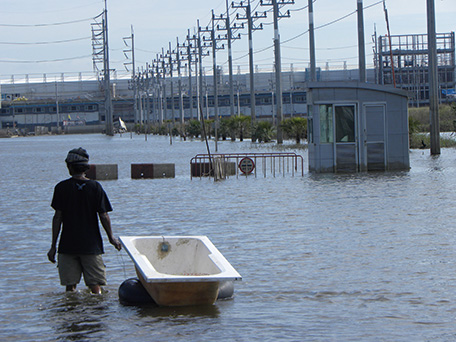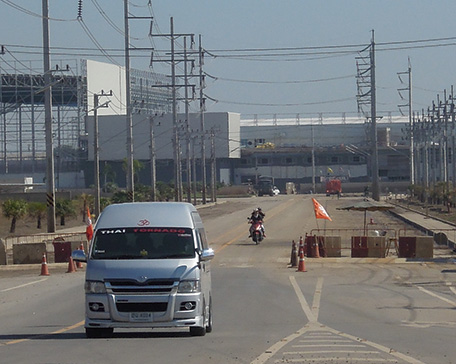Japan's Official Development Assistance White Paper 2012
Section 2 Disaster Aid and Disaster Risk Reduction Measures – Responding to the flood damage in Thailand
In the Mekong Region, rainfall was higher than average in 2011, and from late July, flooding caused widespread damage across primarily Thailand, Viet Nam and Cambodia. In response, Japan provided emergency assistance to these countries. Here the case in Thailand that was widely covered particularly in the Japanese media will be introduced.
In Thailand from late July 2011, flooding occurred primarily in the northern and central regions, and from early October became widespread along the Chao Phraya River as far as the outskirts of Bangkok. Ultimately, although central Bangkok escaped the flooding, approximately 800 lives were lost, and the total cost of damages rose to around 1.44 trillion Thai Baht (around ¥3.6 trillion) according to World Bank estimates.
The outskirts of Bangkok are accommodating many Japanese corporations. Many industrial parks are situated mainly in Ayutthaya Province, seven of which were flooded, which meant that operations had to be suspended in many plants including around 450 Japanese companies. The floods not only caused major economic damage in Thailand, but disruptions to the supply-chain (supply networks such as those for parts and components) also greatly shocked the world economy including Japan.
Thailand is a nation friendly to Japan that provided prompt and plentiful assistance after the Great East Japan Earthquake. Likewise, to Japanese corporations, Thailand also plays a crucial role as a production base and as the core of the supply chain. Based on this relationship with Thailand, Japan provided a range of assistance in coping with the flood damage. More specifically, at a critical stage, Japan twice provided emergency relief goods such as tents, water purifiers, and temporary toilets to a total equivalent of ¥55 million. In addition, Japan provided emergency grant aid to a limit of ¥1 billion to purchase large water pumps and other goods. Similarly, as Japan Disaster Relief (JDR) Teams, expert teams of drain pump vehicles were dispatched to drain flooded areas that had become an issue on the edge of Bangkok, along with expert teams to provide guidance on the waterproofing of critical facilities such as subways, water supplies and airports. In particular, a great deal of attention focused within Thailand on activities to efficiently drain industrial parks, educational institutions and residential areas (See for details).
Furthermore, in terms of reconstruction after the flooding and preventing recurring flood damage, the "Project on a Comprehensive Flood Management Plan for the Chao Phraya River Basin" has been implemented, assisting in formulating a master plan for mid- to long-term flood countermeasures. Part of the project outcome is reflected in the master plan for Chao Phraya flood countermeasures announced by the Thai Government in January 2012.
In addition, in terms of restoring and upgrading the infrastructure, grant aid on a scale of ¥8 billion will be implemented in order to install floodgates on the outskirts of industrial parks that suffered flood damage, and to raise roads that are crucial to industry.
For Japan's continued assistance, the Prime Minister of Thailand, Yingluck Shinawatra, expressed her sincerest gratitude to former Prime Minister Noda at the Japan-Thailand Summit held in Tokyo in March 2012.


Rojana Industrial Park in Ayutthaya Province before (upper) and after (under) the completion of drainage. (Photo: JICA)
